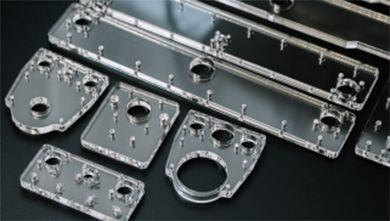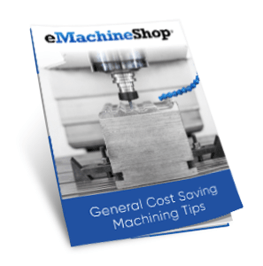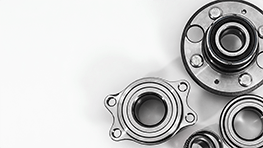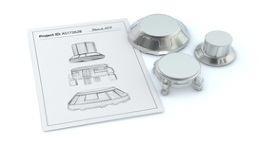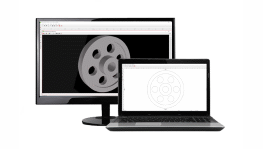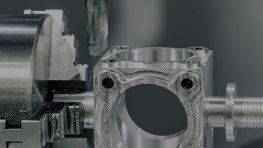Waterjet Cutting Service
Waterjets quickly cut metal and plastic parts from sheet materials using a high-pressure stream of water and abrasive. This is accomplished with the help of a high pressure pump.
eMachineShop offers a cost-effective waterjet cutting solution whether you need a single part, batch of prototypes, or a production order. eMachineShop cuts materials of different shape, size, and thickness, while saving time and providing excellent finish.
- 50+ Materials.
- FREE Shipping in the USA.
- 100% Quality Guaranteed.

Advantages of Waterjet Cutting
- Tight tolerances achievable while cutting materials
- Secondary finishing not required
- Does not cause heat distortion
- Fast turns are possible
- Able to cut through thick material or stacked material
Waterjet Cutting Design Considerations
- Round inside corners with a 0.030″ or larger radius
- Avoid tightly toleranced features in thick materials
- Avoid designing flimsy shapes
- Cutting thicker materials results in larger kerf
- Choose a material that is compatible with waterjet cutting
Order online your custom waterjet cut parts in just a few steps
eMachineShop utilizes cutting-edge waterjet machining, along with a team of highly skilled professionals, to ensure that your parts are cut to perfection with exceptional precision and quality. Order your part easily by following these steps:
-
Create or Upload your CAD file – Design your parts using our free CAD or upload your CAD files, PDF drawings, or images.
-
Configure your part – Select from over 50+ materials and surface finishes. Enter quantity, address and any special comments to the machinist.
-
Receive a quote – Get a quote for your design (instantly via our CAD).
-
Order your parts – Place your order and receive your quality CNC parts!
eMachineShop Made Sheet Parts
What is waterjet cutting?
Waterjet cutting is a technology that uses pressurized water flow to cut hard or soft materials. Waterjet cutting services are often used for industrial applications to produce parts for a variety of industries. CNC waterjet machines are computer controlled to create precise and intricate cuts quickly and accurately.
The waterjet cutting process produces minimal waste material and it is eco-friendly. This makes waterjet cutting an extremely efficient and cost-effective way to produce parts. CNC machine shops offer waterjet cutting due to many benefits including high precision, small cutting kerf width and high reliability and repeatability. Waterjets are capable of cutting complex 2D and 3D shapes for various purposes and products across numerous industries.

Types of waterjet cutting machines
Waterjets can cut virtually any material including hard materials like ceramics, stone, glass and metals. The waterjet cutting process is commonly used for cutting metals such as aluminum, steel and stainless. Waterjet cutting steel is often preferred to laser cutting for thicker materials. Waterjet cutting aluminum can achieve thicknesses of up to a few inches.
Pure waterjet cutters
Pure waterjet cutters cut materials using only highly pressurized water via a high pressure pump and a special nozzle. Pure waterjet cutters are used on materials that are not metallic such as rubber, plastic materials and foam. This production service provides a clean cut while maintaining high accuracy and a speedy production time.
Garnet abrasives
produce the best surface quality and consistent cutting performance. The maximum cutting force is generated when waterjet abrasives containing the heaviest particles are used. Abrasives with high purity and high quality such as garnet achieve reliable results.

Abrasive waterjets
Abrasive waterjets use a combination of an abrasive with a stream of pressurized water to cut materials. Garnet is a commonly used abrasive, which results in high accuracy, fast processing, and precision. Abrasive waterjets have up to 1000 times more cutting power than a pure waterjet cutter and are capable of cutting ten inch thick materials, such as metal, without creating mechanical stress or heat.
Abrasive waterjet machining offers a narrow kerf width and flexibility in machining different shapes. It is a process that many industries extensively rely on.
The most common abrasive used for waterjet cutting is almandine garnet which offers optimal hardness, density, as well as toughness, and particle shape. Though natural and synthetic abrasives can be used in waterjet cutting, garnet is the most reliable and suitable material. This is due to its high performance and unique characteristics.
Abrasives that are softer than garnet such as glass cut slower, while abrasives harder than garnets, such as silicon carbide, and aluminum oxide, produce quicker cuts. The life span of the mixing tube when using garnet is also considerably longer than the faster cutting abrasives.
The two main categories of garnet include:
-
Alluvial Garnet – Alluvial Garnet is naturally crushed and its appearance is similar to pink sand. It is formed by the mineral breaking down over the years by beaches and rivers. Since the material is naturally crushed and ground, it is typically only available in fine sizes.
-
Rock Garnet – Rock garnet has a dark brown to red hue and it has the longest usage historically. Rock garnet crystals are first mined before they are crushed and purified in mills. Rock garnet is distinguishable by its sharp edges and can produce more aggressive cuts than alternate types of garnet.
-
Mesh Grades – the mesh grade is what distinguishes different types of garnet from one another. The mesh grade is the size rating of a piece of garnet. In waterjet cutting applications, the mesh garnet sizes most commonly used are between 50 to 120, with 80 being the most commonly used mesh grade. Garnet abrasives with a higher mesh grade are finer than garnet abrasives with a lower mesh grade. Higher mesh ratings between 100 and 120 mesh improve the cut finish.
Custom Waterjet Cutting Benefits
The waterjet cutting process has many benefits, especially for the manufacturing of custom sheet metal designs, including high accuracy, quality, and quick turn times.

-
Cold cutting – Waterjet cutters are cold cutting machines, which means no heat-affected zones are created during the process.
-
Cost effective – The process is cost-effective since setup time is low and no post-processing is required.
-
Waterjet cutting is sustainable since it does not emit any toxic fumes or create greenhouse gasses.
-
Waterjet cutting services are the ideal solution for unusual and thick materials requiring quality edges.
-
Material that is being removed as part of a water cutting process relates to the kerf width or width of the stream, which is typically 0.03 inch. How wide the kerf will be depends on a wide range of factors, such as the nature of the waterjet nozzle, abrasive, type of material, and material thickness.
There are many advantages of cutting metals using waterjet cutting services. Waterjet services for cutting metals will quickly cut high-quality parts. Waterjet cutting metals produces a minimal kerf, which enables cutting with high detail. Waterjet cutters can cut in a single pass, and there is no thermal effect.
How waterjet cutting works
Waterjet cutting fabrication offers many advantages compared to other industrial processes including precision and quick turns. Waterjet cutting production is among the most demanded services due to its accuracy and efficiency in the production of custom parts. CAD (Computer Aided Design) enables realistic computer models of parts to be produced beginning with sketching a design model on CAD software. The completed design is then converted into other file formats where it is then imported into CAM/CNC software and converted into G-code, the programming language that directs the waterjet machines.
The first cutting stream that the machine makes is called a piece. It is wider than a typical kerf. Tapering is the change in kerf width at the top and at the bottom of the cut. Waterjet cutting machines make a V-shape taper because the cutting stream loses some of its power as it cuts deeper into a material. Pressurized water flow goes from a high pressure pump through high-pressure tubing and to the cutting head. Pressurized water travels through an opening of the cutting head, which is typically sapphire, ruby, or diamond with a small hole.
Waterjet Cutting Design Notes
Material that is being removed as part of a water cutting process relates to the kerf width or width of the stream, which is typically 0.03 inch. How wide the kerf will be depends on a wide range of factors, such as the nature of the waterjet nozzle, abrasive, type of material, and material thickness.
Initial waterjet piercingThe first cutting stream that the cutting machine makes is called a piece. It is wider than a typical kerf. Peirce represents the first step in the water cutting process and can be accomplished in several ways: low-pressure, circular, linear, and stationary. The pierce method mostly depends on the material and thickness.
TaperingTapering is the change in kerf width at the top and at the bottom of the cut. Waterjet cutting machines make a V-shape taper because the cutting stream loses some of its power as it cuts deeper into a material.
Pressurizing the waterThe method of pressurizing the water is the process which involves rotary direct drive pumps and linear intensifiers. These pumps have sensors, a control system, water filters, and a motor.
Most popular Waterjet Machining materials
Waterjet Cutting Metal
Abrasive waterjets are ideal for doing virtually any metal cutting and other tough materials in various shapes. These machines are the ideal choice for cutting materials such as aluminum, steel, titanium, brass, and tool steel. Waterjets can cut metal up to 8-inches thick.

Waterjet Cutting Aluminum
Aluminum is a versatile, durable, and tough material, making it among the most popular materials for various applications. Aluminum alloys are strong compared to their weight and are durable and attractive. Among the most commonly preferred aluminum alloys on the market is aluminum 6061-T6 due to its versatility and machinability. Many companies that provide waterjet-cutting services offer 6061-T6 as the standard grade for CNC waterjet machining. Aluminum alloy 6061 provides excellent corrosion resistance and good workability and is heat-treatable. Aluminum alloy 6061 is used by the automotive, military and many other industries. Although various machining methods are available for cutting aluminum, including laser cutting and plasma cutting services, waterjet cutting is among the most effective and versatile methods available for cutting aluminum.
Advantages of Cutting Aluminum With a Waterjet
Waterjets are capable of cutting up to 8 inch thickness as well as stacking thin sheets for cutting, including aluminum alloy 6061. There is no melting during the waterjet cutting process as the process uses a non-thermal cutting method. The edge material is left free of burn marks. Waterjet-cutting aluminum can cut very intricate patterns and designs without any hardening of the material along the cut edge. In addition, waterjet cutting aluminum produces virtually no need for secondary edge processing.

Waterjet Cutting Steel
Abrasive waterjet cutting technology is preferred for cutting thicker sheet materials including steel. Waterjets can cut thin and thick steel though the time taken increases significantly when cutting thick pieces of steel. An abrasive waterjet cutting machine can cut through up to 8 inches of most materials, including carbon steel and stainless steel. As the material thickness increases, so does the cutting time. For this reason, waterjets usually can only cut steel up to 6 inches thick.
The Benefits of Waterjet Cutting Steel
-
No Heat Affected Zone (HAZ) – Waterjet-cutting steel produces no HAZ since it is a heat-free process. Other metal cutters that are not heat-free can cause heat-affected zones, which can ruin the material’s integrity and cause the material to weaken near the cut area. Since waterjet cutting eliminates HAZ, the material cannot overheat which allows for consistency in the final products.
-
Superior Finish – Since waterjet-cutting steel produces no HAZ, a cleaner cut is achieved with no discoloration, resulting in a superior finish and eliminating the need for secondary finishing.
-
Cut Quality – the cut quality of cutting steel using waterjet cutting technology is precise and smooth since abrasive waterjets have a cutting stream that moves uniformly through the material.
-
Efficiency and Precision – waterjet cutters can cut stacks of multiple layers of material together, increasing the efficiency of the waterjet cutting process. Waterjet cutting is among the most precise cutting methods available and accurately cuts steel parts reliably.
Limitations of Waterjet
For all of its advantages, a waterjet service also comes with some disadvantages that should be considered when deciding if it is the best operation for a part. Depending on the thickness of the material, it may be more cost effective to have the parts produced on a laser or plasma cutter. When lead time is important other potential operations, such as laser cutting fabrication, may result in faster production times. For thick parts, the kerf will widen as the jet slows down as it travels through the part. This causes less accurate feature tolerances when cutting thick material. Other operations such as CNC milling or EDM machining can hold very tight tolerances and maintain perpendicularity on vertical surfaces of a part.

Waterjet Cutting Applications
Due to the efficiency, accuracy, and cost-effectiveness of waterjet manufacturing this fabrication process is used in many industries:
Aerospace industry
Medicine
Cutting of glass
Food industry
Electronic industry
Fiberglass
Military applications
What Our Customers Say
Similar Processes
Laser Cutting
Laser cutting is often used to produce 2D parts from sheet metal. A laser beam vaporizes a cut path to achieve the desired shape. Great for prototypes and short runs.
Plasma Cutting
CNC Plasma Cutters use a high-velocity stream of ionized gas to cut parts out of sheet metal. Excellent for producing 2D parts when working with thick metal sheets.
Frequently Asked Questions
Q: How does waterjet cutting work?
A: Waterjet cutting is a process that uses high-pressure water to cut materials. It is often used for industrial applications, as it can easily cut through metal, glass, stone, and other materials. CNC waterjet machines are fast and efficient and can produce clean accurate cuts.
Q: What is waterjet?
A: A waterjet machine is a powerful tool that uses pressurized water to cut through metal, plastic, glass, stone and many other materials. Waterjet machines are often used in industrial or manufacturing settings to create parts with precise dimensions.
Q: Can waterjet cut steel?
A: Yes, waterjet cutters can cut steel. The waterjet steel cutting machine can be used to cut through thick or thin sheets of steel. Waterjets can cut stainless steel as well in a safe process that doesn’t produce harmful emissions or waste products.











